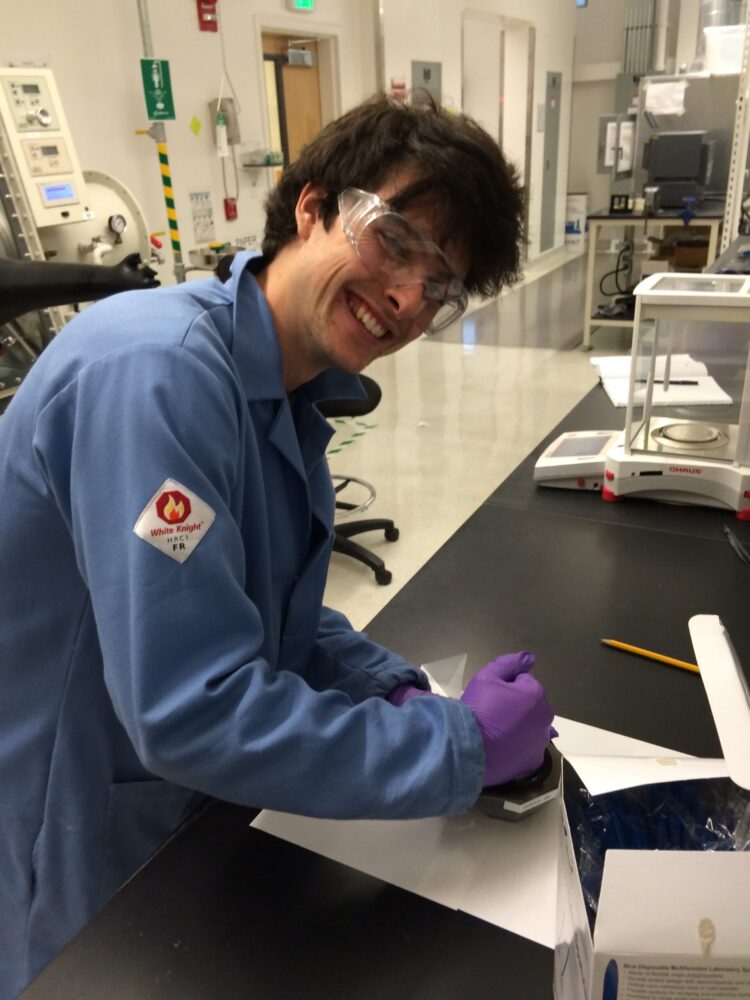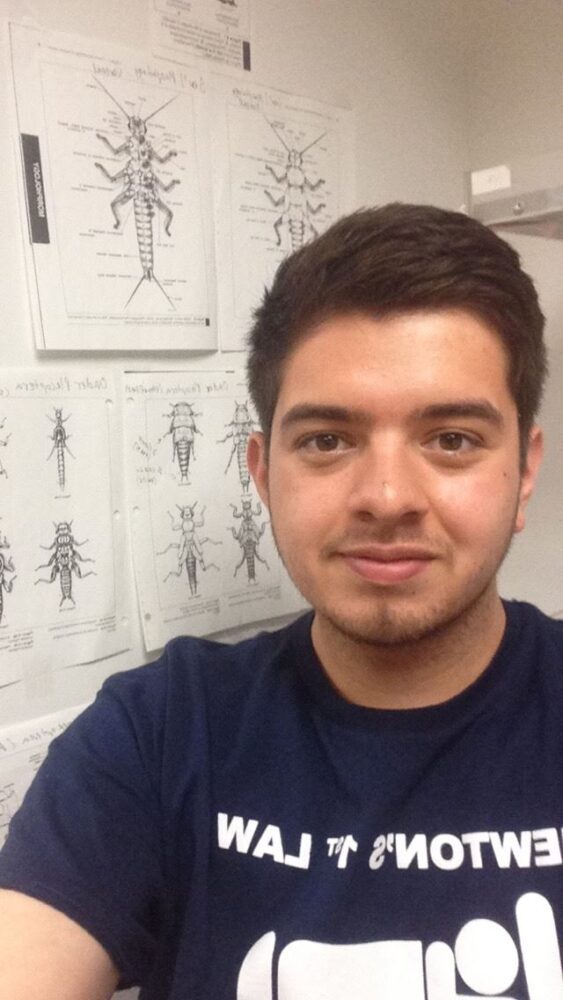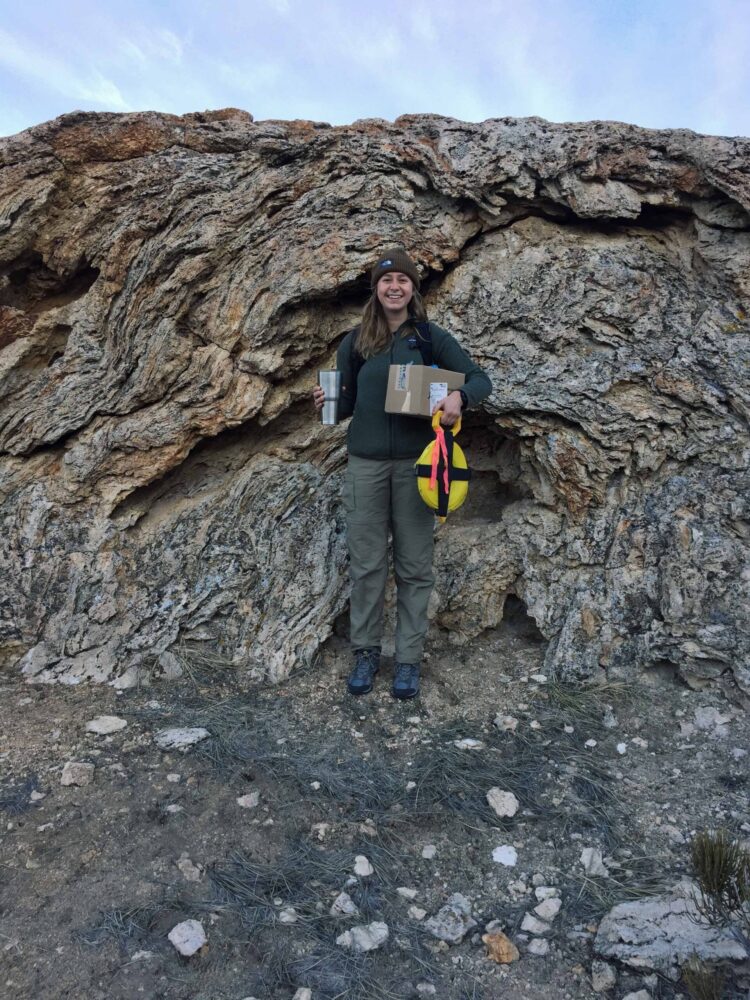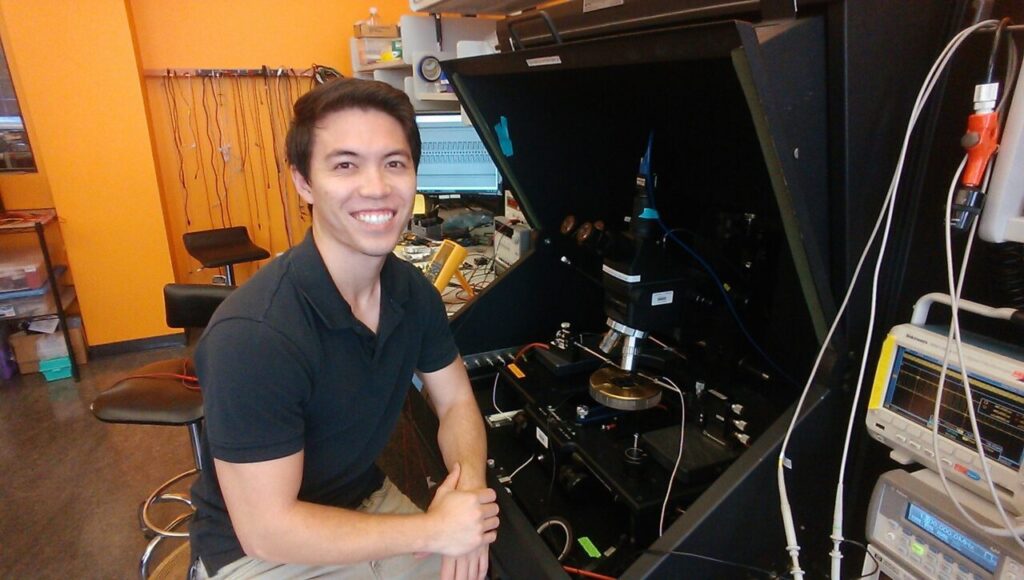Caolan John

Quantum mechanics shows us that the electronic energy levels of isolated atoms are discrete. Upon the formation of a solid with many atoms, these energy levels merge to become quasi-continuous functions of the electrons momentum known as energy bands. In CeSb, the structure of these energy bands protects the stability of a semimetal state that would, in the absence of topological considerations, be destroyed in favor of an insulating state. In addition, CeSb possesses local magnetic moments that strongly interact with the electrons of the solid. I will be investigating […]
Nazar Akhverdyan

Hydrocarbon contamination can be extremely detrimental to affected ecosystems and bioremediation, the use of microorganisms to detoxify and remove environmental pollutants, presents an effective solution. Specifically, oxygenases are required to perform hydroxylation or carboxylation reactions that cleave aromatic rings into less inert intermediates. Oxygen is an essential co-substrate for many aromatic hydrocarbon degradation pathways. However, bioremediation of aromatic hydrocarbons is often constrained by limited oxygen levels, which can be attributed to oxygens low solubility and rapid depletion during cellular respiration. Bioreactor-mediated hydrocarbon degradation similarly faces oxygen limitation issues, and solutions […]
Stanley Liu
With the initial discovery and isolation of graphene in 2004, there have been many studies in other 2D materials. One such material is hexagonal boron nitride (hBN), otherwise known as white graphene, due to its structural similarity to graphene but electrically insulating qualities. hBN plays a unique role as a dielectric layer when paired with graphene, vastly improving charge carrier mobility and chemical stability. In order to optimize these effects, we need control over the properties of hBN films, including layer number, crystal size, and crystal quality. While chemical vapor […]
Christopher Hernandez

It was recently discovered that hexokinase 2, a cellular metabolic enzyme, can act as a pathogen pattern recognition receptor and activator of the inflammasome within macrophages. Specifically, hexokinase 2 is activated by a saccharide subunit of the peptidoglycan cell wall found in many bacteria. Gram + bacteria have a greater abundance of cell wall subunits available for recognition and therefore have a greater potential to activate, and therefore be controlled by, hexokinase 2. We will characterize the importance of hexokinase 2 in mediating an immune response by infecting murine macrophages […]
Harrison Khoo

DNA Holliday junctions (HJs) are double-stranded structures that promote genetic variation during DNA replication. Errors during separation of the two strands that comprise the HJ may lead to various biological issues contributing to human disease. The Redding Lab seeks to approach this problem by first learning more about the biophysical properties of HJs. We look to engineer a DNA curtain, a microfluidic assay capable of trapping HJs on a microscope slide for further analysis in real time observation. Once successful, we can see the effects of manipulating experiment design on […]
Cody Raiza

Biodiversity is becoming an increasingly important field of study for biologists as we begin to explore drivers of diversification. Within this deep look into organisms large and small comes discoveries of biodiversity in unexpected forms. My research has focused on the biodiversity of courtship displays in male jumping spiders of the highly-diversified genus Habronattus. These spiders produce complex displays that combine visual and vibratory signals. These vibratory “songs” vary across species and it is unknown what structures are responsible for this variation. I used a combination of video and imaging […]
Nima Sedaghatian

The field of metabolic engineering seeks to rationally design microorganisms to produce specific compounds, usually through the heterologous expression of non-native enzymes and modifications to native metabolism. A commonly employed experimental approach is to randomly mutate enzymes of interest and screen for a desired phenotype. However, this method is constrained by limitations in screening the massive primary sequence diversity scientists are now able to generate. Biosensors derived from naturally-occurring transcription factors can provide an efficient alternative to the low-throughput detection methods currently employed, facilitating an in vivo and tunable method […]
Holly Barnhart

A multitude of different trace metals can readily incorporate into the crystal lattice of calcite, depending on factors like solution chemistry, temperature, and growth rate. Measurements of these elemental abundances in calcite can be an effective means of understanding rates and environments of crystal growth and have been widely utilized over the past decades to decode paleo-environmental growth conditions and, to some extent, in environmental remediation of polluted systems. Much of the present understanding of microscale controls on trace element incorporation into carbonates is based on laboratory experiments and studies […]
Darya Fadavi

Transmission of cytoskeletal forces to the nucleus depends highly on the LINC (linker of the nucleoskeleton and cytoskeleton) complexes, which consists of inner nuclear membrane SUN (Sad-1 and Unc) proteins that bind to outer nuclear membrane KASH (Klarsicht, ANC-1, Syne Homology) proteins. Recent studies have suggested significant differences between SUN1 and SUN2 specifically in their homo-oligomerizaton in the perinuclear space. In my project, I use bioinformatics tools, molecular docking, and molecular dynamics (MD) simulations in collaboration with an experimental group to explore the molecular differences between these two proteins, SUN1 […]
Ryan Shih

Microelectromechanical systems (MEMS) are sub-millimeter structures that combine electrical and mechanical principles to produce novel sensors, actuators, and transducers for complicated tasks at the microscale. While most MEMS research focuses on devices operating in air, biomedical applications and the parallel growth of microfluidics have stimulated efforts towards MEMS operation in fluid, especially biological media. One goal of such operation is to develop a microrobot capable of entering the human body and performing medical procedures such as diagnostics, drug delivery, local tissue repair, and surgery. Whether this microrobot is autonomous or […]